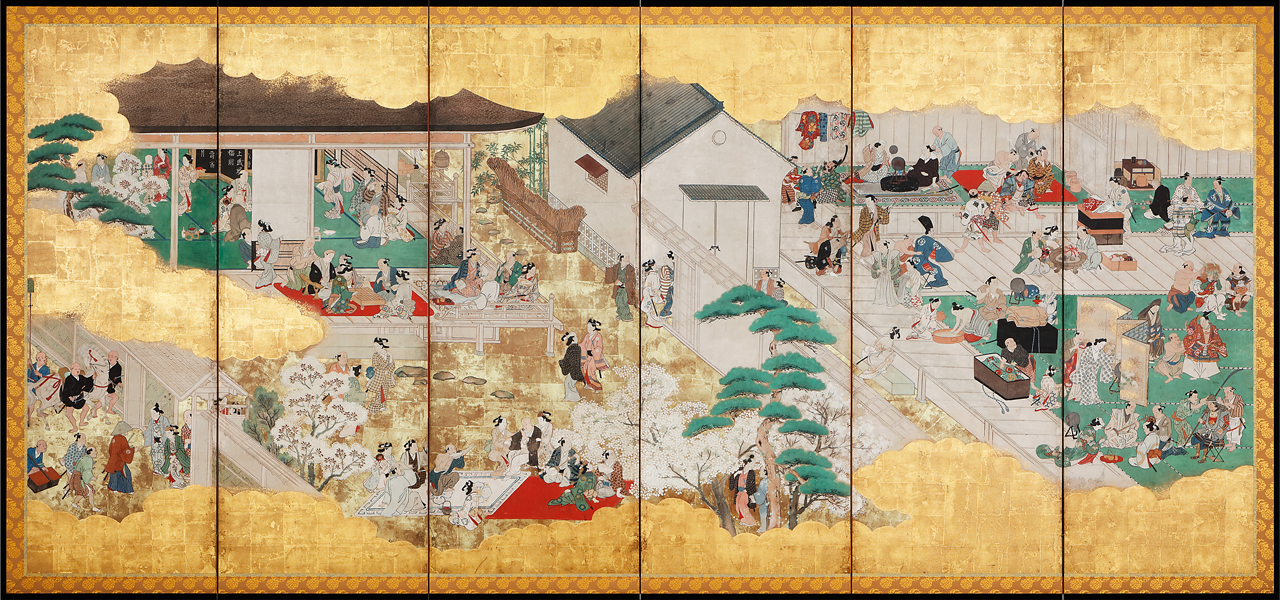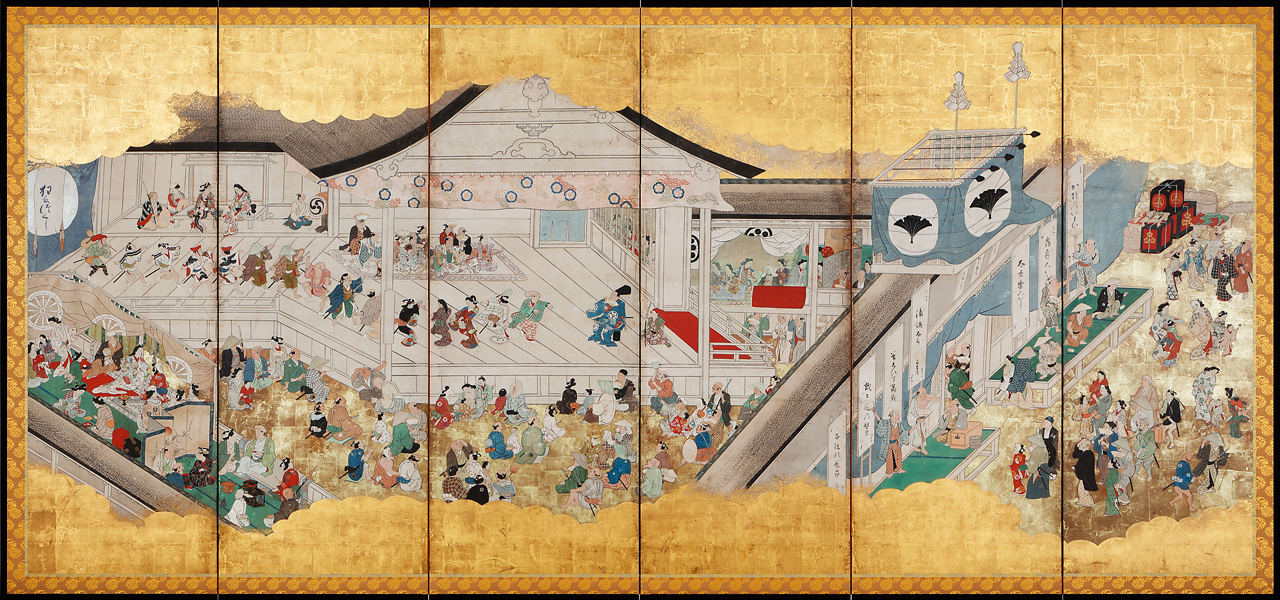Kabuki Theater
DATA
- Artist:
- Hishikawa Moronobu
- Historical era:
- Edo (17th century)
- Material:
- printed, gold on washi paper
- Medium:
- pair of six-fold screens
- Theme:
- High Resolution Facsimile of Historical Cultural Assets
- Size:
- Each Screen H165.8 × W366.4 cm
- Recipient:
- National Institutes for Cultural HeritageMAP
[Original]
- Current owner:
- Tokyo National Museum
- Material:
- ink, color, and gold on washi paper
DESCRIPTION
Hishikawa Moronobu (?-1694), a painter of the early Edo Period, is known as the founder of Ukiyoe, for he revolutionized genre painting by establishing the woodblock print as an artistic medium. But he was also a prolific painter as well as a printmaker. This pair of folding screens portrays the Nakamura Theater, the most prestigious of the four kabuki theaters of Edo, peopled by a total of 285 figures. Although not signed or sealed, it is one of the best-known works of Moronobu’s final years. The right screen shows the touts at the entrance of the theater, the actors on stage performing the Grand Taiheiraku Dance, and the audience watching. The left screen shows the actors having their hair arranged and putting on their costumes backstage while audience members are entertained in the adjacent teahouse.


